Silverstone Raven RV01 ATX Chassis Review
Peter Donnell / 11 years ago
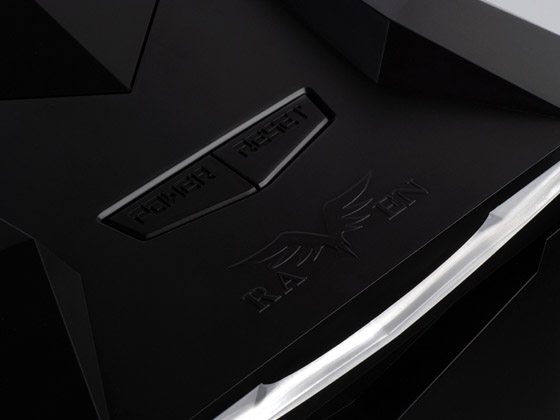
Silverstone have established a rich and wonderful legacy in the PC market, crafting some of the finest chassis on the market today. Yet while they’re often regarded as one of the best (if not THE best) when it comes to making computer chassis solutions such as the Sugo, or many of their HTPC products, sometimes its easy to forget they’re also masters at the very large and on occasion extreme end of the chassis market.
We saw this side of Silverstone when we were at CES earlier this year, on display were some gargantuan industrial type chassis that really dominated the room and while some of those have yet to be released it was a small taste of what big things Silverstone can do. The chassis I’m taking a look at today is another example of the extreme end of Silverstone who are more often than not better known for cool, sleek and refined designs.
The RV01 is a huge chassis, but it is not its size that makes your eyes widen, but its design. Firstly it looks like it was styled off of Batmans body armor and secondly the motherboard is rotated 90 degrees with the I/O panel pointing upwards. As you can see from the spec sheet below the RV01 isn’t lacking in features and it will be interesting to see how it holds up in our build section given its somewhat unique design and layout.
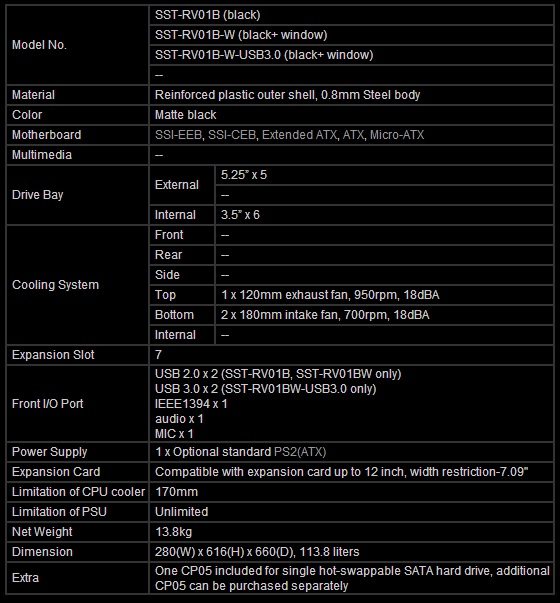
The box for the RV01 is huge and while the chassis isn’t anywhere near the size of the box it does come well packaged and padded to provide support for the bulky 13.8KG chassis.
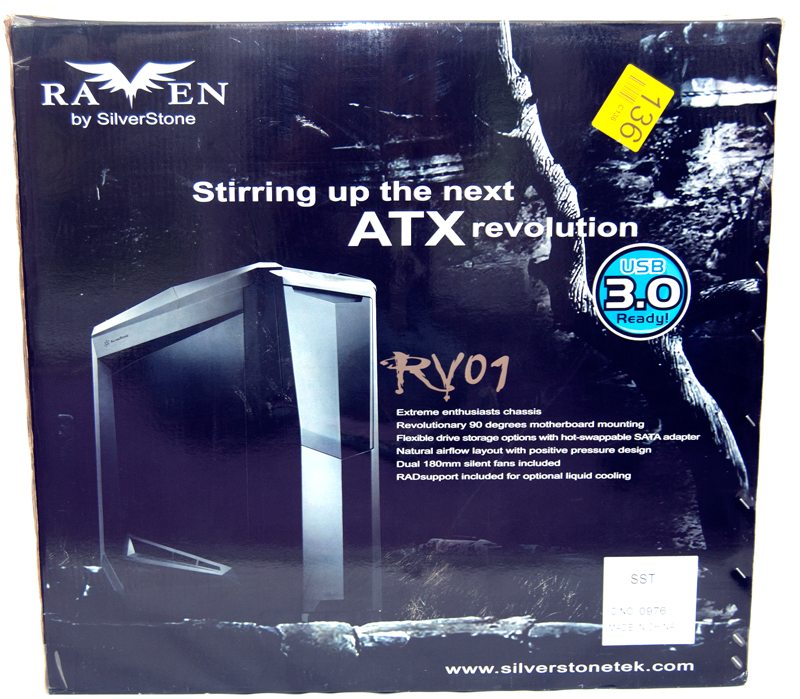
The back of the box features a nice breakdown of many of the major features, but we’ll take a closer look at those in a moment.
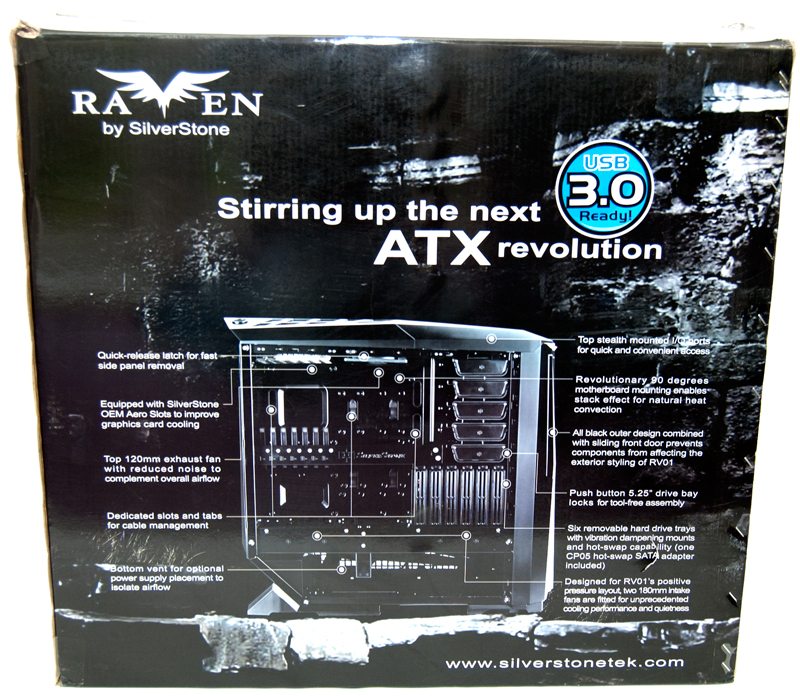
In the box I found a manual that was nicely written and easy to understand, a few brackets, lots of screws, some cable ties and a USB 3.0 to 2.0 adapter.
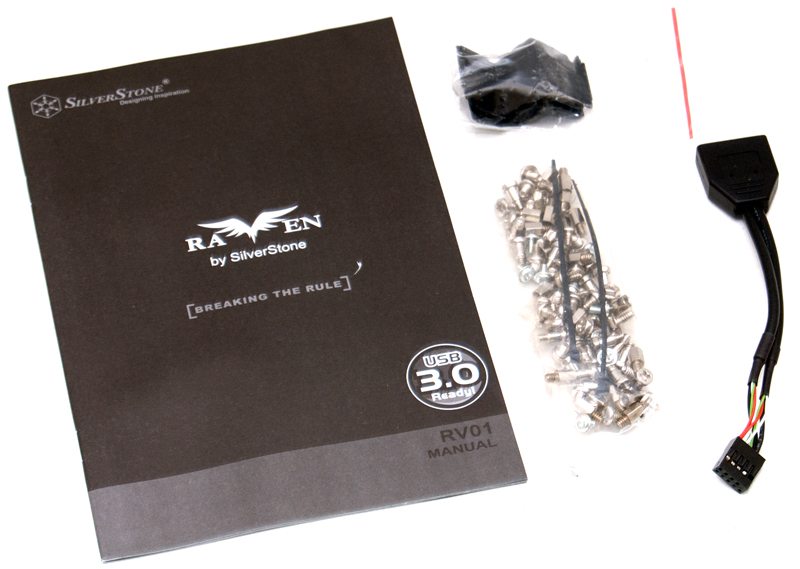
The left side of the RV01 is dominated by extreme angles and a very aggressive design. There is a large clear perspex window panel and a funky shaped air vent panel along the bottom.

This vent is held in place with several screws on the rear side, which we’ve photographed on the next page. There are 10 vents here and while it may offer a few practical solutions to airflow it feels more like visual flair than anything.
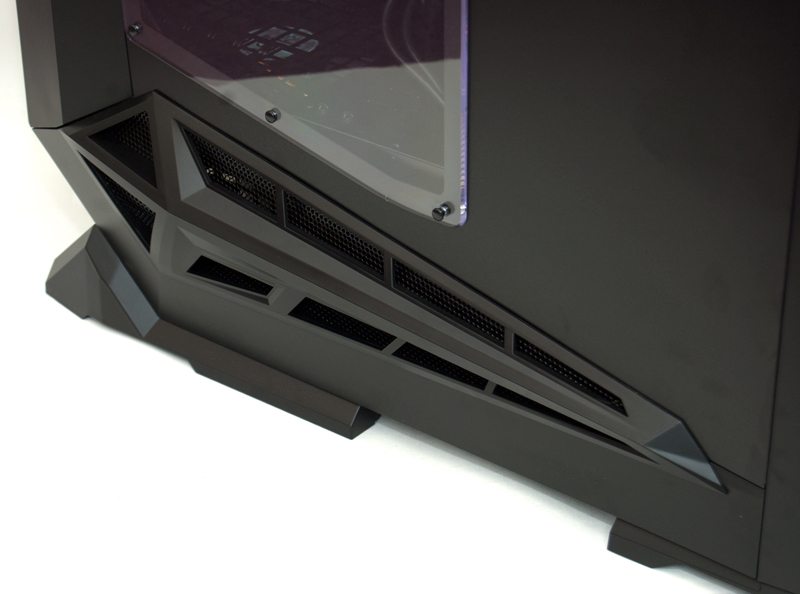
The top panel is split into two sections, the front features the main I/O panel, while the back features a removable cover.
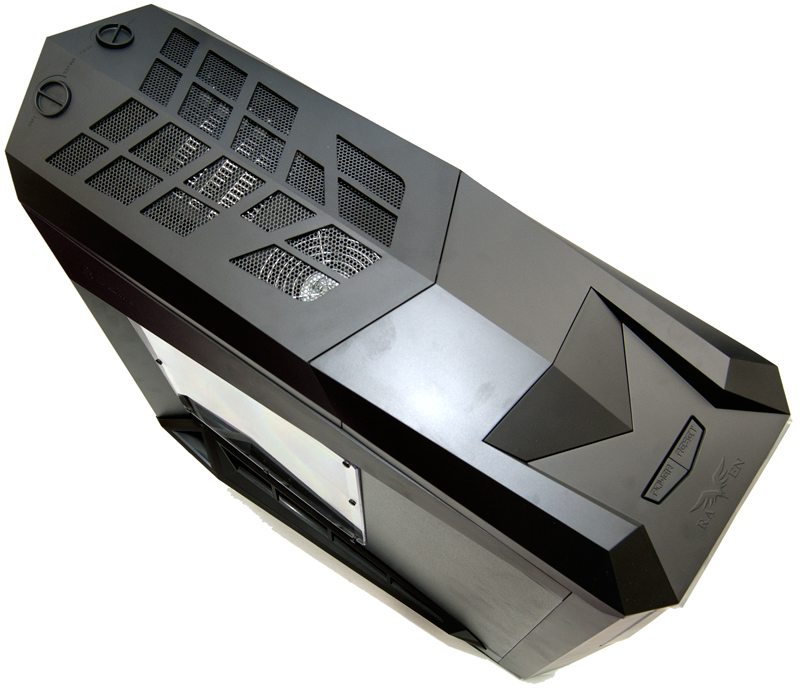
There are two twist lock mechanisms at the rear that hold this panel in place, turn them both and you can slide the panel backwards, then lift it from the top of the chassis.
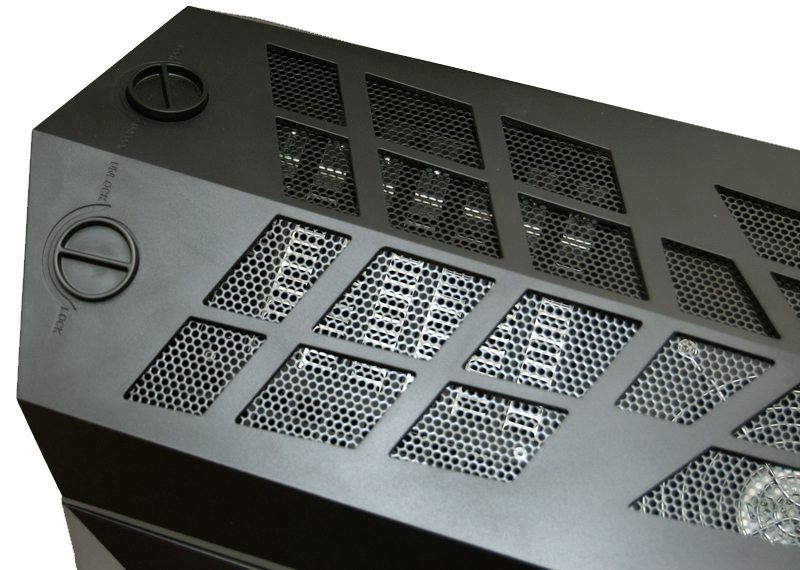
Behind this panel we find that there is a 120mm exhaust fan fitted with a metal guard, 7 expansion slots that are fitted with re-usable ventilated covers, some ventilation holes and two clips from removing the side panels.
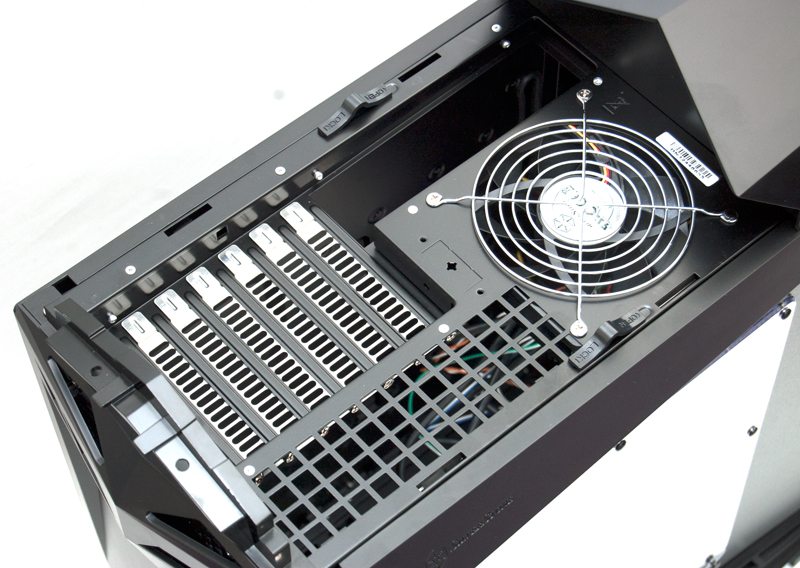
The cover that I removed can be seen here, it features some mesh that allows for easy airflow, but it is not to be confused for an air filter.

The front section features an embossed Raven logo, as well as a pair of engraved buttons for the power and reset switches.
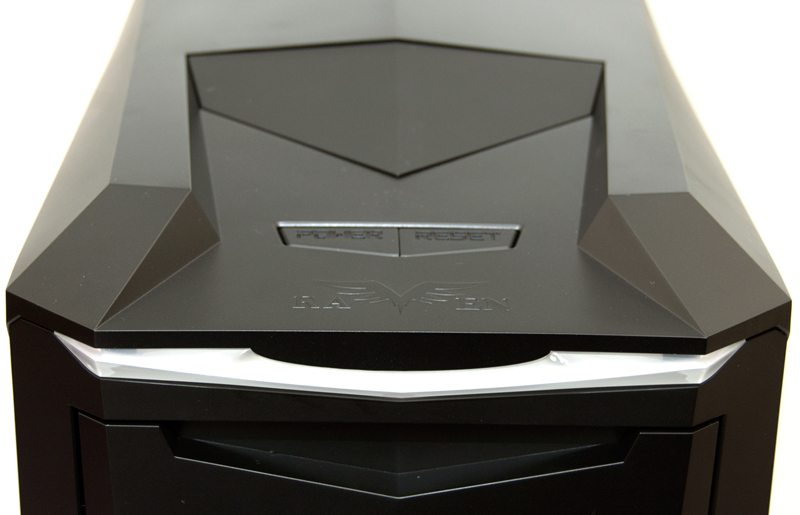
Press down on the rear of the triangle panel at the back and it pivots up to reveal the Firewire, audio and USB 3.0 ports.
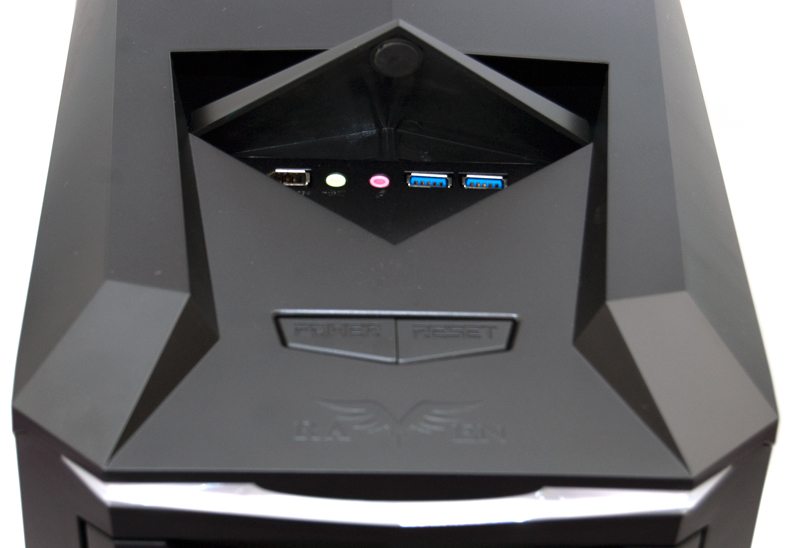
The front panel of the chassis is immensely evil-looking and looks like some kind of extreme armor plating, While it does feature some strong angles it doesn’t actually have any standout features.
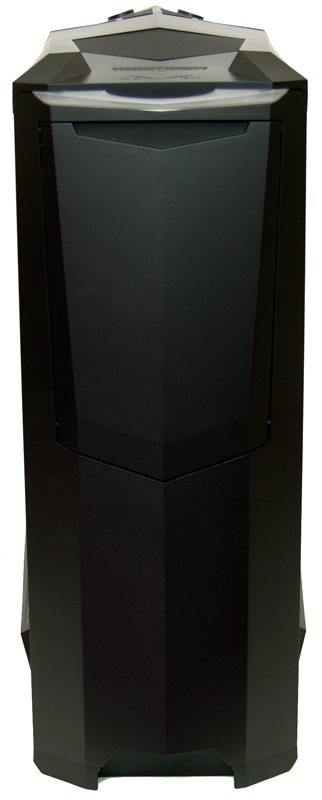
However, the front panel is spring-loaded and can be pulled down like a shutter, where it then clicks into place in an open position. Press it down a little and it slowly glides back to the top before locking neatly back into place, very cool indeed.

Behind this slick panel you will find 5 x 5.25″ drives with removable covers.
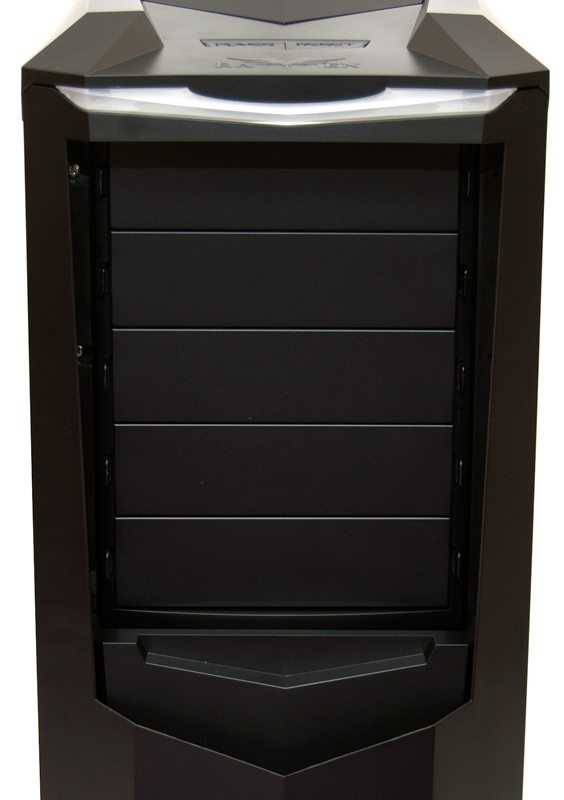
The right side panel features many of the same style points of the left, albeit without the side panel window to gaze through, but the matching air filter and angles give the chassis a nice uniform look from any angle.
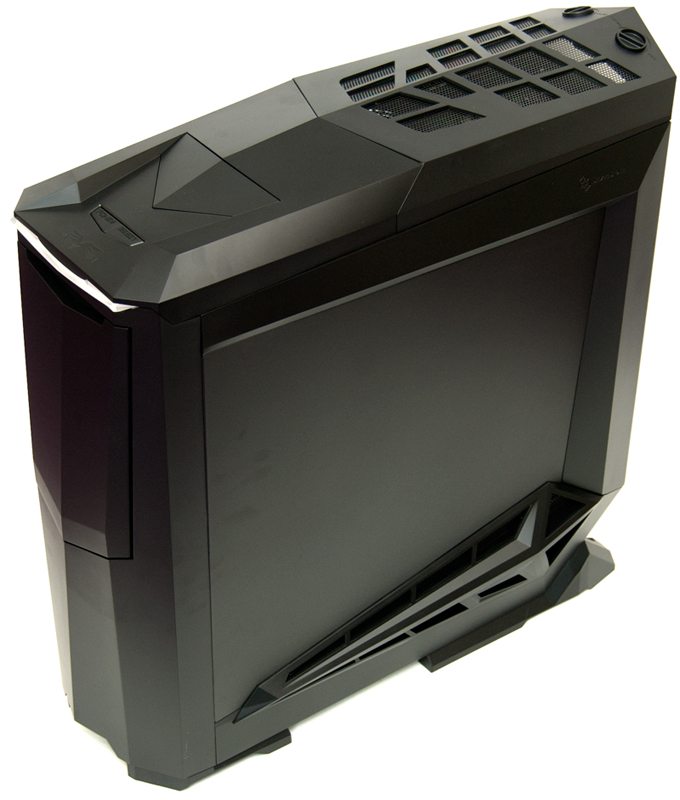
The rear panel of the chassis is just as bold as the front and offers little in the way of features. It’s certainly strange to not see more going on here, but should you wish you can actually remove this panel and hand an external radiator on the back of the chassis, although personally I don’t think that would look too great.
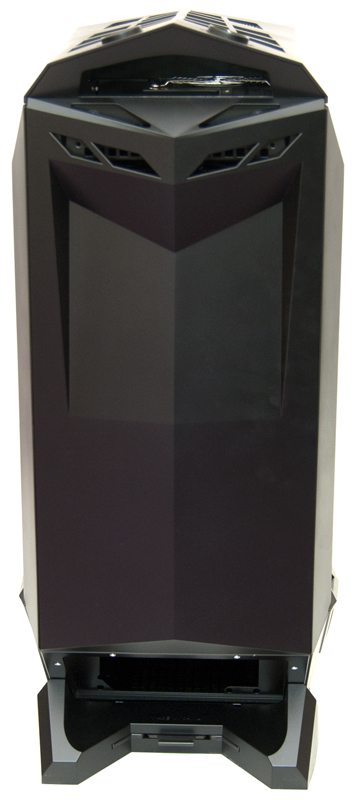
As the base of the rear of the chassis is the PSU mount, it’s recessed into the chassis a few inches but you can just about see the mounting frame inside the case.

Also at the back is a large 240mm dust filter, perfect for providing your PSU with clean air, but also long enough to handle some of the largest PSU’s on the market. There is an extra filtered air intake at the front and four huge rubber coated feet help keep everything stable.
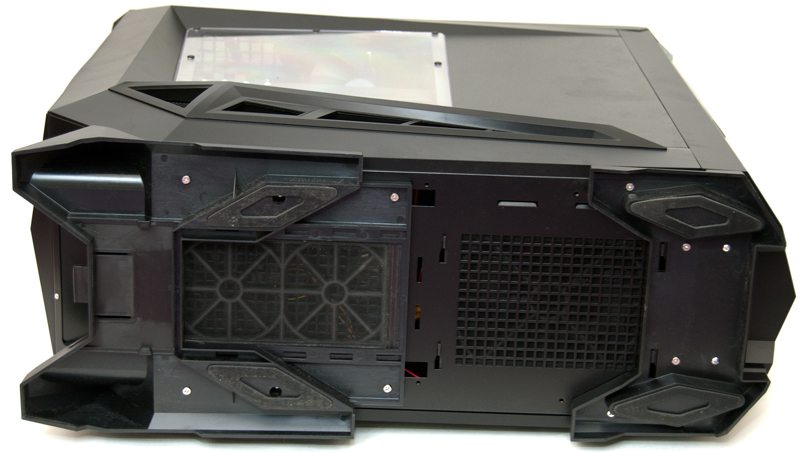
With the side panel removed were presented with a very unique internal layout, the motherboard takes up the upper left area and is mounted with the I/O facing upwards, the 5.25″ bays in the top right as you would normally find on a pc chassis, HDD bays are rotated 90 degree, PSU has its compartment in the low base of the chassis.
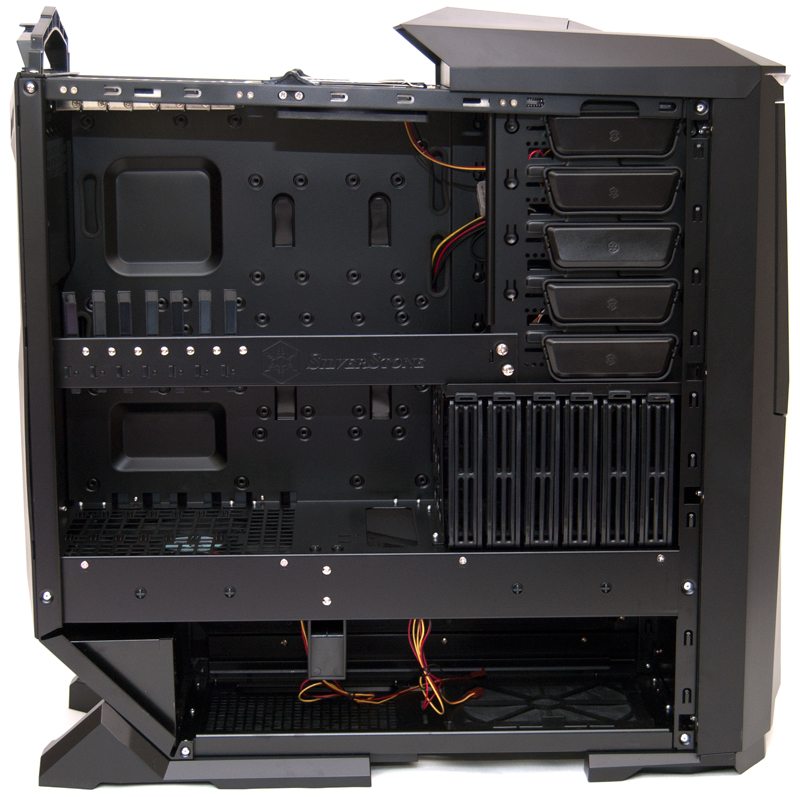
The bottom left side of the chassis features a 180mm intake fan and another 180mm fan on the right directly below the HDD bays, both of which draw air from under the chassis and from the side panel vents which will line up with the large space located below the HDD bays and the 180mm fans.
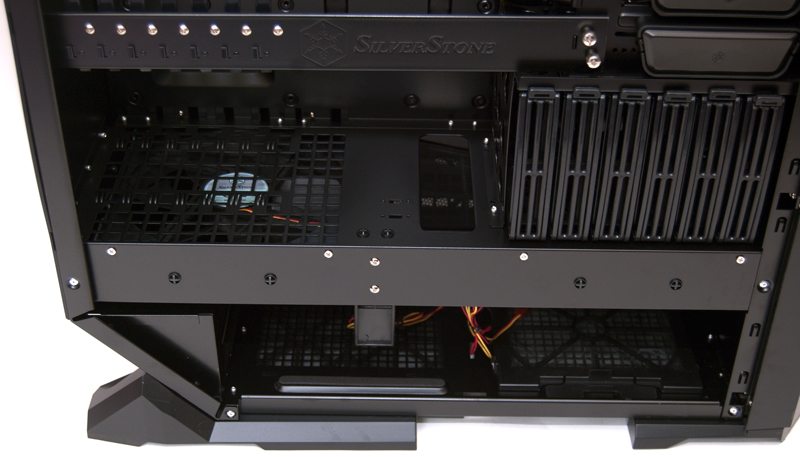
Moving up from there we see the VGA bracket with its retractable supports.
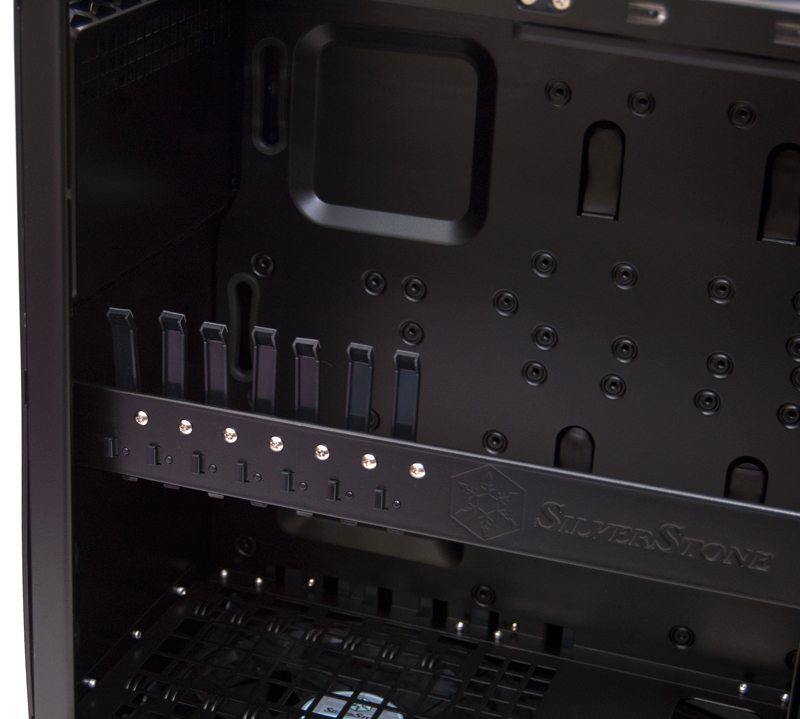
There feature a locking gear system that ensures they’ll stay firmly in place. Not sure if this is really needed, but it does look cool and it’s nicely engineered.
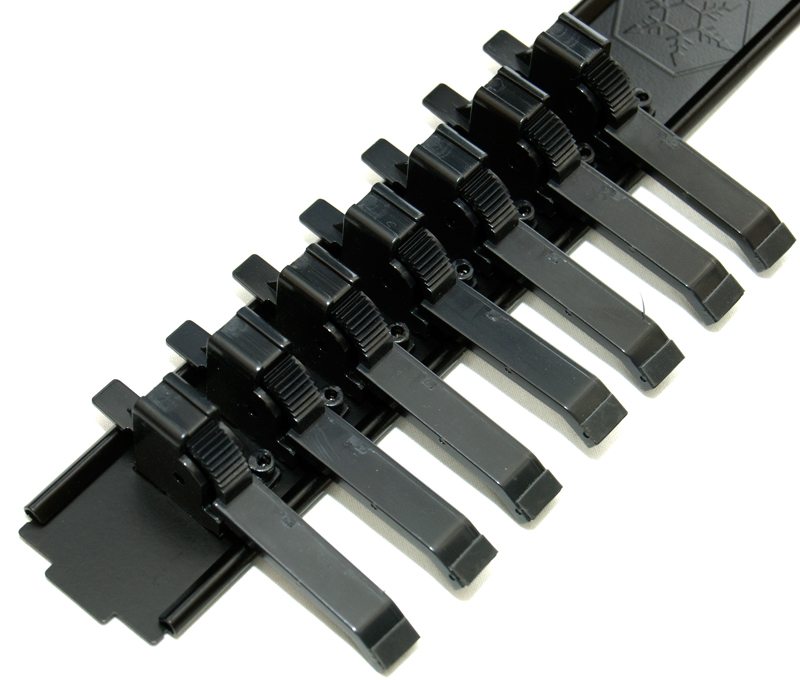
The 5.25″ bays feature a slick locking mechanism that operates much like a light switch, push the top to lock, bottom to unlock, very easy to operate.
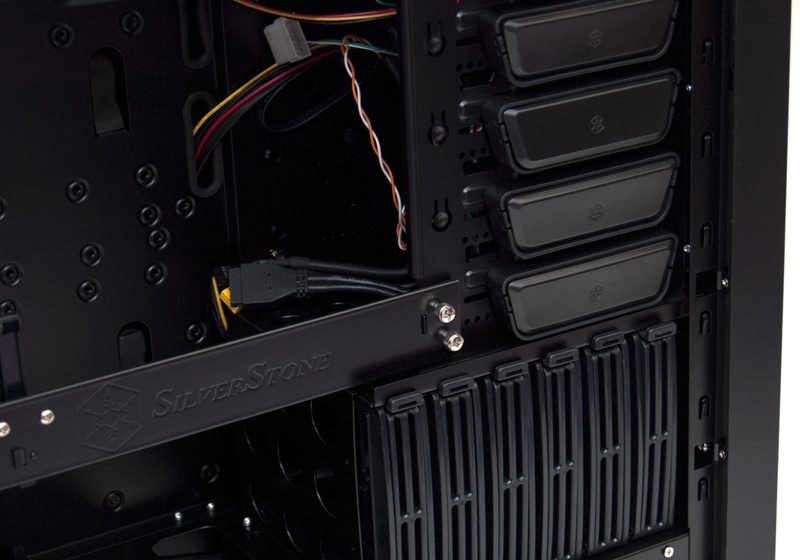
Each of the six hard drive bays support both 2.5″ or 3.5″ drives, while the left most drive bay also features a set of hot swap sata connections.
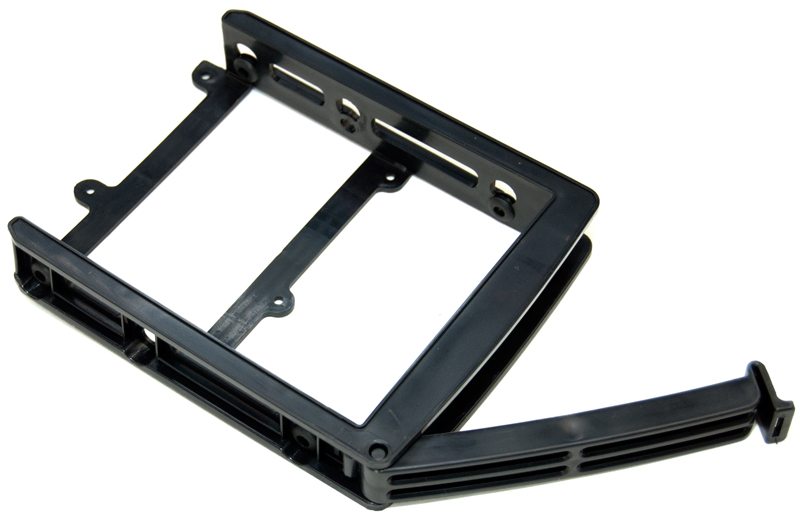
With the VGA support arm removed we can see the board is extensively drilled for installing motherboard standoffs, making this chassis compatible with a multitude of motherboard sizes and configurations. There is some cable management cut outs on the left and right sides but they’re overall quite small and I’m worried they might be difficult to work with overall.
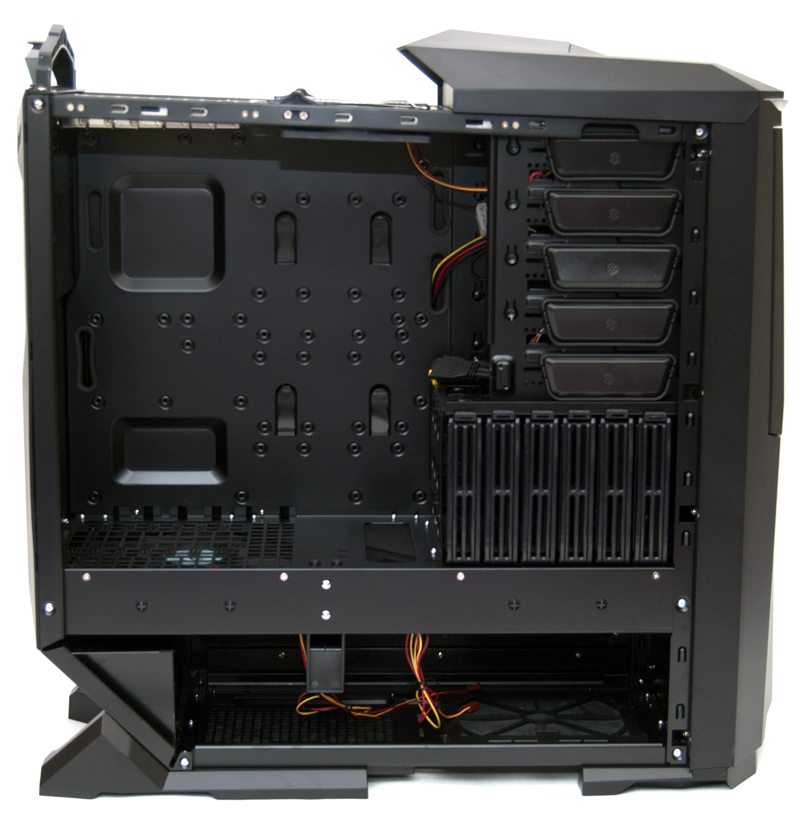
There is no CPU cooler mounting cutout either, so the backplate for the cooler must be installed before the motherboard.
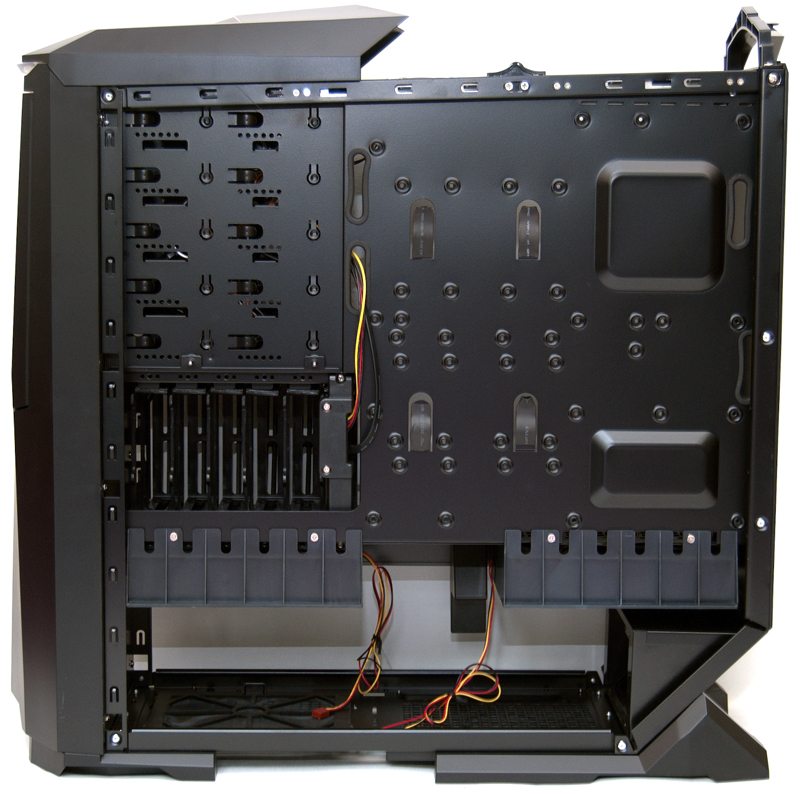
Cut into the chassis are these metal clips, perfect for some cable management and a somewhat simple yet effective solution to the problem.
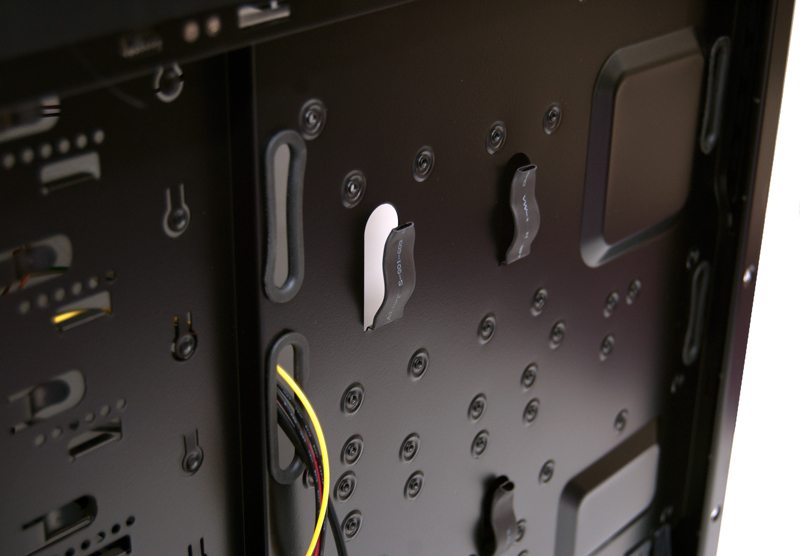
Here we can better see the air filters on the side panels, they’re likely going to be a nightmare to keep clean but I’d rather clean dust from the door panel than my entire system.
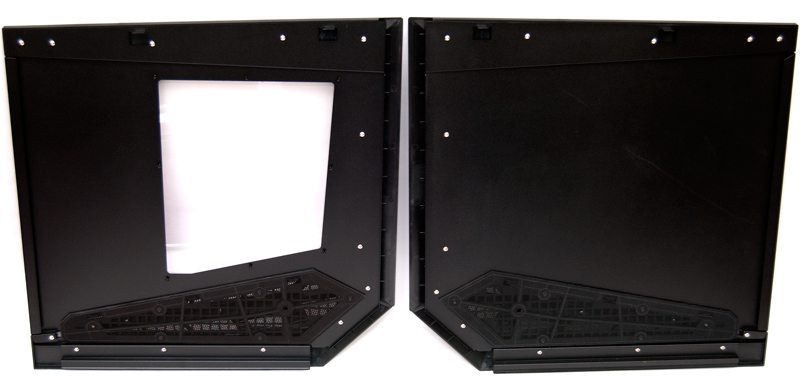
Total build time on the RV01 was about 25 minutes and if I’m honest I could have done it much quicker, but I actually took my time to read the instruction booklet to ensure the installation process wasn’t as crazy as the design, it wasn’t, it all installed much like any other PC case.
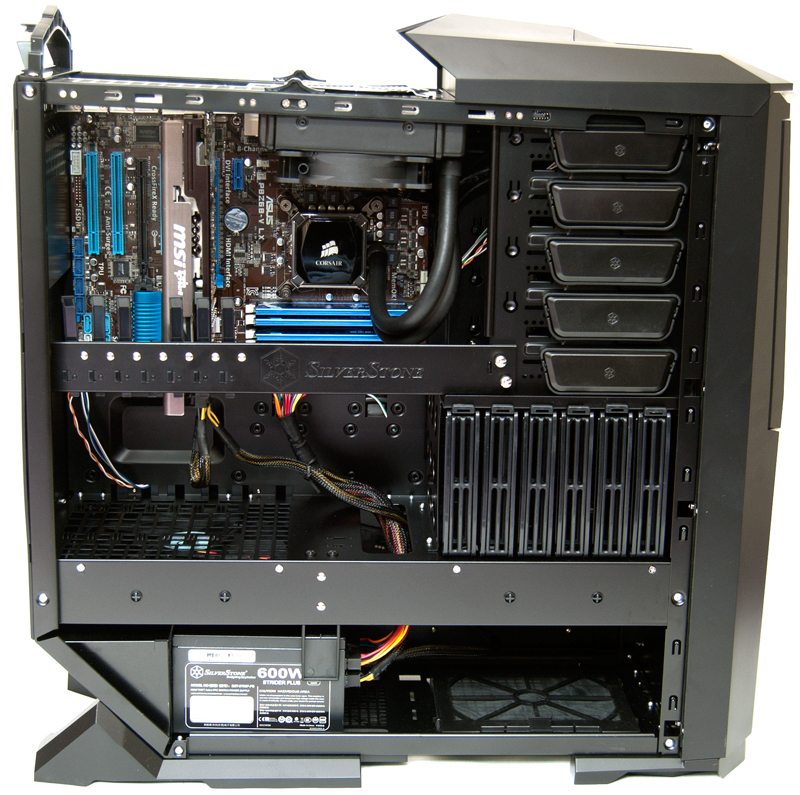
I’ve stripped out the top 120mm exhaust fan and replaced it with a 120mm radiator from the Corsair H80i, although I was also still able to use the fan guard on the top which may not be needed, but it does look cool.
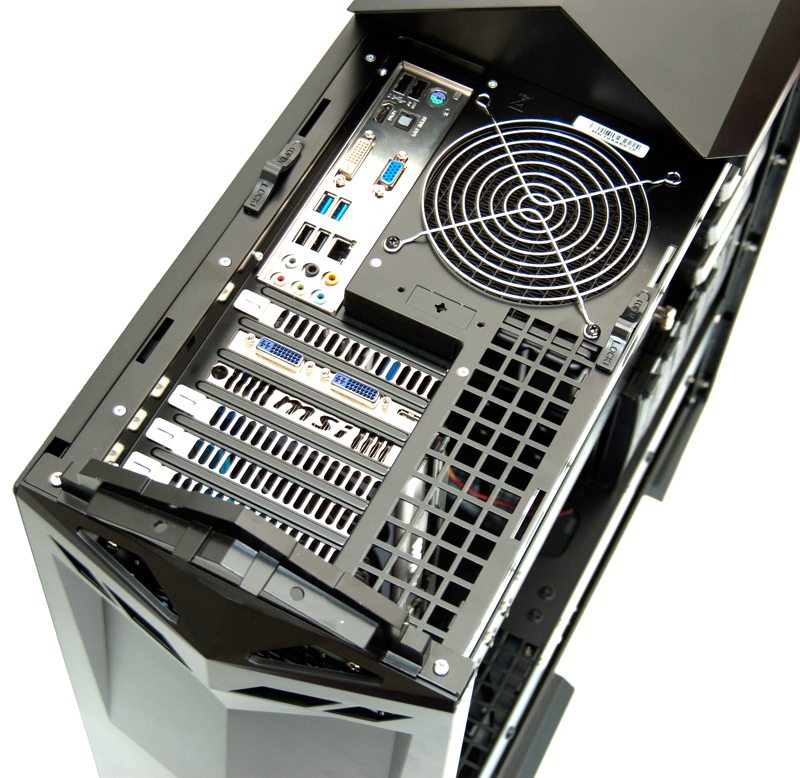
A large cutout to the left of the HDD bays allows you to feed cables from the PSU to the main compartment, it’s not elegant, but it gets the job done.
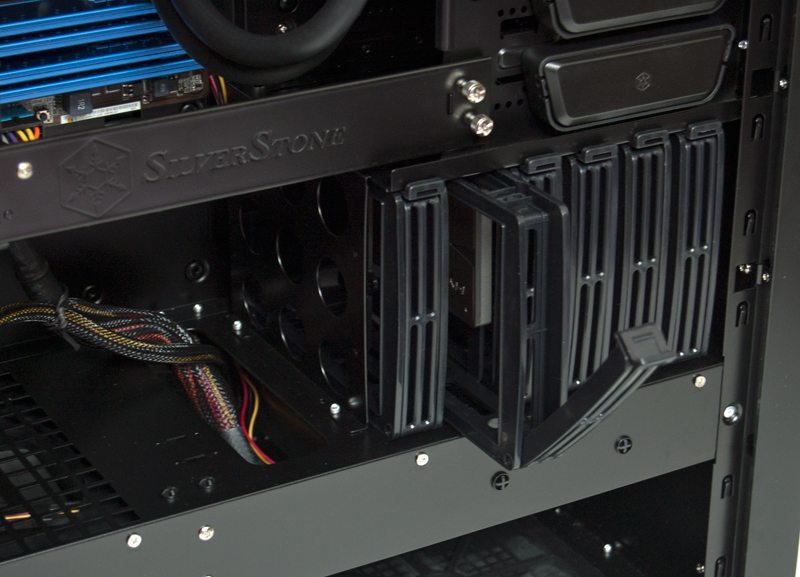
The H80i fits quite nicely and there is also more than enough room here for a multiple GPU setup without any conflicts.
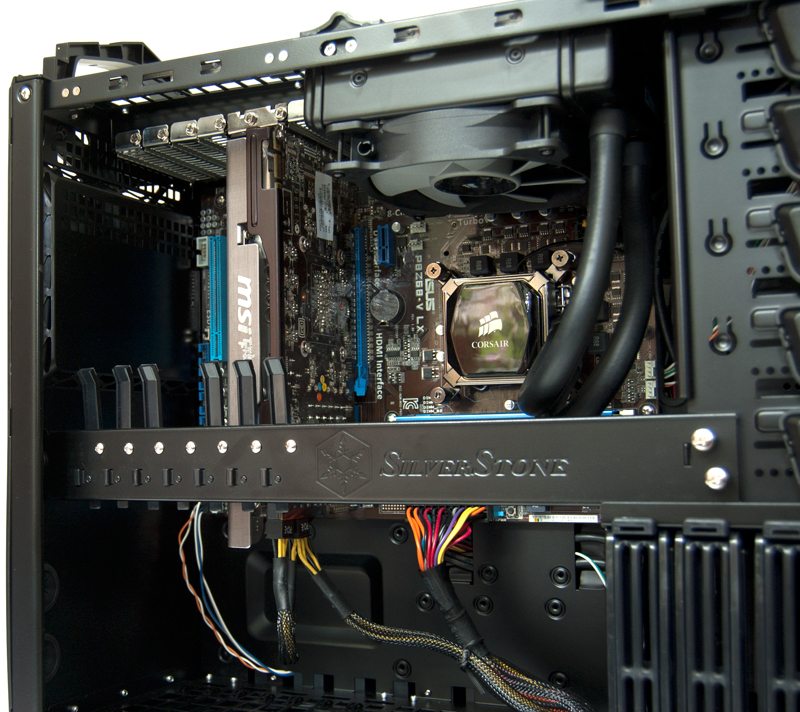
There are a lot of cables running from the front panel that could have been better routed, as they take up a lot of space from the top 5.25″ bay and it looks a little scruffy cramming them all through those cable management cut-outs.
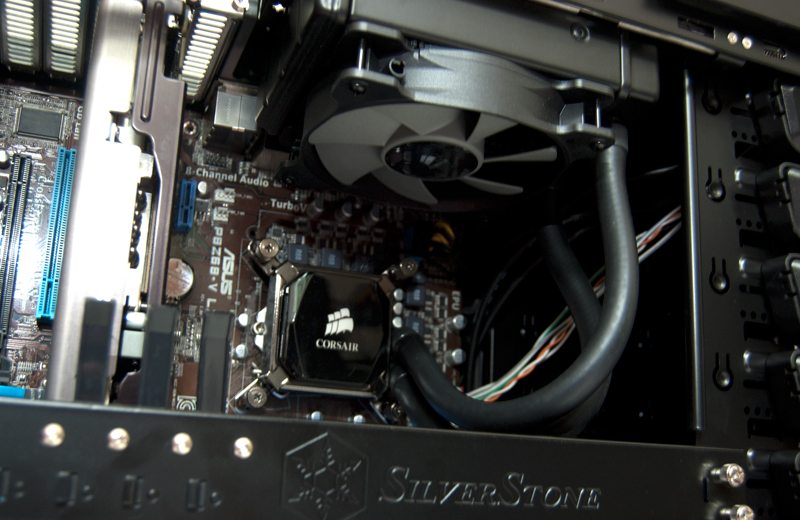
From the base of the chassis to the top we see plenty of unobstructed air flow, those two large fans carry a lot of air at low RPM and there is plenty of room for the heat to exhaust at the top of the chassis.
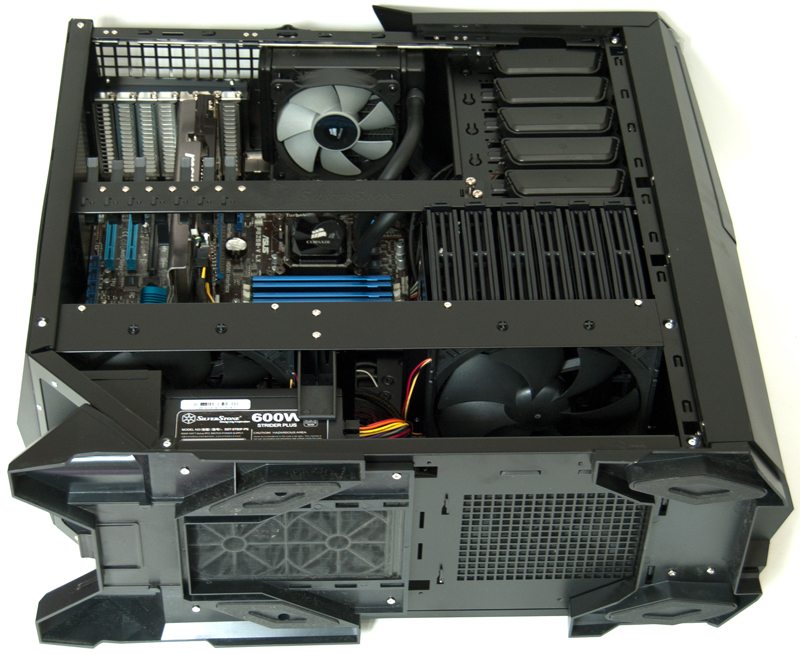
With the side panel back in place we get a great view of the chassis interior thanks to that clear window panel.
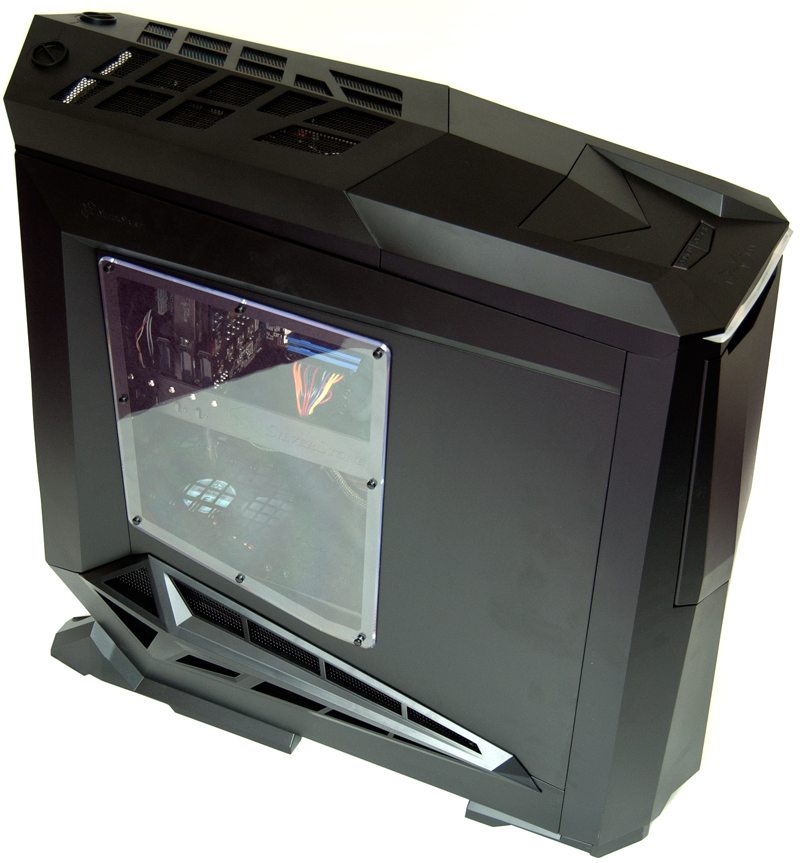
you can just about make out the back other motherboard through the heavy mesh panel on the top.
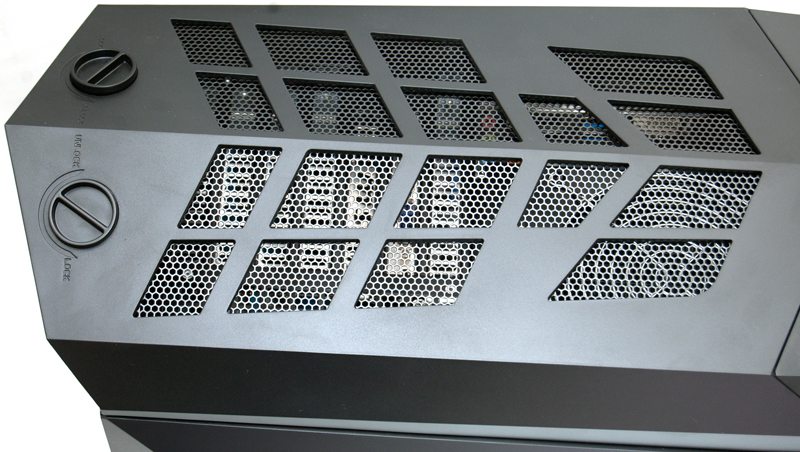
At the back of the chassis you can see there is a small opening at the top, just enough to run your cables to the back of the motherboard while keeping a clean look thanks to the top panel cover.
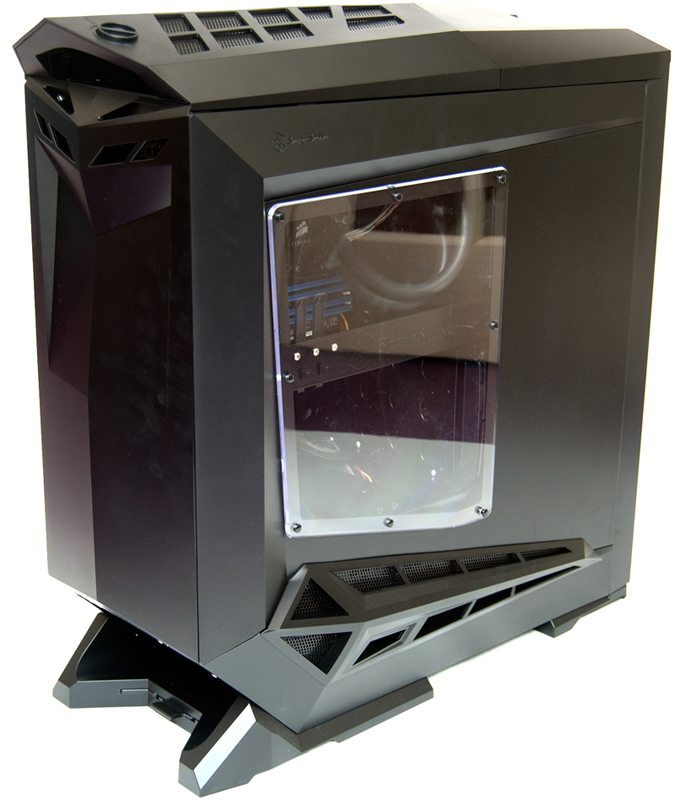
Finally we see that from the front the build looks as great as it did when I took it out of the box, all the major features tucked away under those big panels.


Silverstone have set out to break from convention here and while turning the motherboard 90 degrees seems like a design gimmick at first, it does actually bring some tangible benefits to the build. The first of these is that heavy graphics cards seem to put a more linear strain on the motherboard PCI slots, preventing the cards from drooping downwards. Next we have airflow, Silverstone are experts when it comes to cooling and here they’re using one of the most basic facts about heat, heat rises! By turning the motherboard we see that the GPU now exhausts upwards and the chances of heat leaving the chassis and moving away from it are much improved, helped even further by the two huge 180mm fans in the bottom of the chassis that help keep everything flowing nicely. Pulling cold air in at the bottom and exhausting it out the top, simple but very effective.
There is room for more cooling of course and I was able to install our 120mm radiator in the top, you can actually hang a radiator from the back of the chassis by removing the hard cover with a screw driver, it won’t look too pretty though unless you’re using a large custom radiator and our Corsair H100i was far from compatible in this configuration, in all honesty it doesn’t seem like a great idea to even bother with that, I would suggest you pick a chassis that is better suited to large radiators if that is what you really want.
This chassis is a little bigger than your average full tower and I was expecting it to offer extensive storage bays, huge amounts of fan mounts and extensive cable management, but it really doesn’t unfortunately. 6 HDD bays is nothing out of the ordinary really but it is more than enough for most people. There are no extra fan mounts but thankfully this doesn’t appear to be an issue as Silverstone have designed the airflow to be well-balanced already. The cable management is really poor in my opinion, I would have loved to have seen a few more cut-outs, not to mention make the existing ones larger and fit them with grommets, a chassis this big with a big window and the ability to hold a lot of high-end components would benefit greatly in terms of design and airflow if you could route the cables better. This is of course no big surprise as the main design of this chassis is a 2008 model and five years ago cable management just wasn’t that big of a deal, something this has since been addressed in more recent models such as the RV03.
The design was meant to look like a stealth fighter plane and they’ve succeeded with that perfectly, the almost evil matt black finish is flawless and it gives a really imposing vibe to the chassis, as too does its general size, shape and bizarre layout.
I’m happy to award the RV01 with our innovation award, but I really wanted to see this earn out Editors Choice. It is innovative in the sense that it’s something new, it’s different and over a refreshing change from all the normal boxes out there and that’s what I love about it, but without more HDD bays and better cable management or rad support it just falls short of being an Editors Choice.
Pros
- Unique design
- Great air cooling
- Great support for larger graphics card, motherboards and power supplies
Cons
- One of the most expensive chassis on the market
- Could offer more storage options given overall size of chassis
- Cable management could be improved (although excusable given age of design)
eTeknix says: “If you love the design of this chassis then I don’t think any award is going to change your mind one way or the other, you either love it or you hate it and for those that want something different and a little crazy then there really isn’t much out there that offers something as unique as the RV01. When people see this chassis their response is often “wow” and its easily one of the coolest chassis designs on the market.”




















